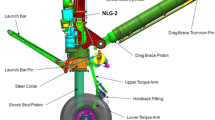Abstract
The estimation of integration costs and knowledge about the influencing factors are particularly important in every integration scenario. As integration tools are developed to fit in many integration scenarios, specific problems of individual customers cannot be considered. Additionally, some integration problems like in case of semantic heterogeneity can hardly be addressed in general. Hence, there is always a certain degree of customizing effort when implementing an integration solution. The goal of the case study presented in this paper is to identify relevant influencing variables that determine the integration effort in a real world data integration scenario. For this purpose different versions of an integration toolset are evaluated with respect to effects on the integration effort based on data that was collected during the project. This data is on the one hand used to specify integration efforts over the entire project term. On the other hand it gives an indication to possible influencing factors for integration costs.
Preview
Unable to display preview. Download preview PDF.
Similar content being viewed by others
6 References
Frohlich, M. T., Westbrook, R.: Demand chain management in manufacturing and services: web-based integration, drivers and performance. Journal of Operations Management 20 (2002) 729–745
Siddique, Z., Boddu, K. R.: A mass customization information framework for integration of customer in the configuration-design of a customized product. Artificial intelligence for engineering design, analysis and manufacturing 18 (2004) 71–86
Yano, K., Hara, H., Uehara, S.: Collaboration Management Framework for Integrating B-to-B and Internal Processes. In: Sixth International Enterprise Distributed Object Computing Conference (EDOC’02). (2002) 75–83
Zdravkovic, J.: Workshop on Modeling Inter-Organizational Systems (MIOS)-Concepts of Flexibility for Efficient Integration of B2B Processes. In: Lecture notes in computer science. (2004)
Allen, D. W.: Property Rights, Transaction Costs, and Coase: One more Time. In: Medema, S. G. (ed.): Coasean economics: law and economics and the new institutional economics. Kluwer Academic Publishers, Boston, Dordrecht, London (1997) 105–118
Bass, C., Lee, J. M.: Building a Business Case for EAI. eAI Journal (2002) 1–20
Stelzer, D., Fischer, D., Nirsberger, I.: A framework for assessing inter-organizational integration of business information systems. International Journal of Interoperability in Business Information Systems (2006) 9–20
Bussler, C.: The Role of B2B Engines in B2B Integration Architectures. ACM SIGMOD Record, Special Issue: Data management issues in electronic commerce 31 (2002) 67–72
Medjahed, B., Benatallah, B., Bouguettaya, A., Ngu, A. H. H., Elmagarmid, A. K.: Business-to-business interactions: issues and enabling technologies. The VLDB Journal 12 (2003) 59–85
Sheth, A.: Data Semantics: What, Where, and How?”,. In: Mark, L. (ed.): Data Semantics (IFIP Transactions). Chapman and Hall, London (1996) 601–610
Rahm, E., Bernstein, P. A.: On Matching Schemas Automatically. VLDB Journal 10 (2001) 334–350
Sheth, A.: Changing Focus on Interoperability in Information Systems: From System, Syntax, Structure to Semantics. In: Kottman, C. A. (ed.): Interoperating Geographic Information Systems. Kluwer Academic Publishers, Boston (1998) 5–30
Conrad, S., Hasselbring, W., Koschel, A., Tritsch, R.: Enterprise Application Integration. Grundlagen-Konzepte-Entwurfsmuster-Praxisbeispiele. Spektrum Akademischer Verlag, München (2006)
Rahm, E., Bernstein, P. A.: A survey of approaches to automatic schema matching. VLDB Journal 10 (2001) 334–350
Sutherland, J., van den Heuvel, W.-J.: Enterprise Application Integration and Complex Adaptive Systems. Communications of the ACM 45 (2002) 59–64
Author information
Authors and Affiliations
Editor information
Editors and Affiliations
Rights and permissions
Copyright information
© 2007 Springer-Verlag London Limited
About this paper
Cite this paper
Bazijanec, B., Gausmann, O., Turowski, K. (2007). Parsing Effort in a B2B Integration Scenario — An Industrial Case Study. In: Gonçalves, R.J., Müller, J.P., Mertins, K., Zelm, M. (eds) Enterprise Interoperability II. Springer, London. https://doi.org/10.1007/978-1-84628-858-6_85
Download citation
DOI: https://doi.org/10.1007/978-1-84628-858-6_85
Publisher Name: Springer, London
Print ISBN: 978-1-84628-857-9
Online ISBN: 978-1-84628-858-6
eBook Packages: EngineeringEngineering (R0)




